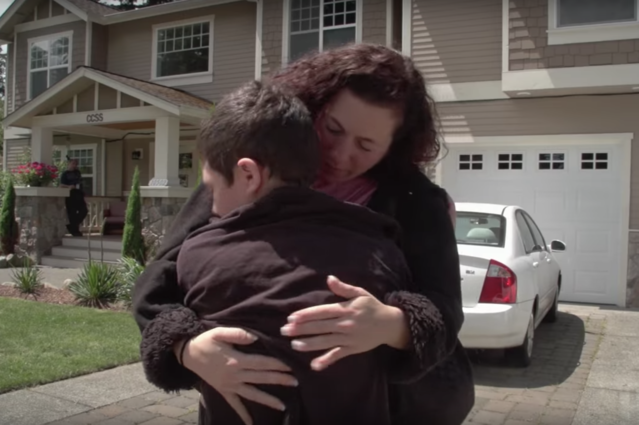Health
Untreated Mental Illness and 'A Dangerous Son'
We need to stop shaming mothers of children with mental health disorders.
Posted May 5, 2018

On the morning of December 14th, 2012, 20-year-old Adam Lanza shot and murdered his mother, Nancy Lanza. He then drove to Sandy Hook Elementary School and murdered 20 first graders and six faculty members before taking his own life. A nation, angry and heartbroken in the aftermath of this tragedy, immediately began to assign blame in an attempt to make sense of a seemingly inexplicable series of events. A familiar narrative ensued: Adam Lanza was mentally ill. Therefore, his mother, Nancy Lanza, must have been responsible. She could have stopped this. It was her fault. Director Liz Garbus' documentary, A Dangerous Son, which airs Monday, May 7th on HBO, explores the frustrations and difficulties of caring for a child with severe mental illness.
Garbus attempts to balance two conflicting narratives. On the one hand, characterizing all people who have mental illness as violent and dangerous is simplistic and inherently not true. However, on the other hand, there is a very small percentage of the mentally ill population that could become violent if left untreated. The question as to where the responsibility lies in term of caring for these individuals is the paradox raised throughout the film. If we as a nation are placing responsibilities on these families to manage these difficulties, society needs to provide the resources to enable them to do so effectively. The documentary cites that one in ten American children suffer from serious emotional disturbances. Of this population, less than fifty percent of children will receive any type of psychiatric treatment.
Garbus provides viewers a gripping, first-hand look into lives of three mothers, Stacy, Edie and Cora, who face astronomical hurdles in trying to support their emotionally disturbed sons. The film demonstrates the consequences of the psychiatric community's decision to move toward a model of de-institutionalization in the 1960's. This policy, which was intended recognize civil liberties among those with mental illness, reduced the number of hospital beds in psychiatric units from 600,000 to less than 60,000. The three families featured throughout the film suffered immensely as a result of this.
When the state could not provide adequate treatment, Stacy, Edie and Cora were their son's only advocates. They were put in an untenable situation, forced to play the role of parent, therapist, crisis counselor, case manager, and legal advocate in the most extreme of circumstances. They worked round the clock to take their sons to various psychotherapy appointments, residential treatment facilities (wait times nearing 180 days) and mitigated the consequences of constant medication alterations. They spent hours on the phone fighting the insurance companies who constantly pushed back on treatment decisions made by the children's mental health professionals. The mothers were scrutinized and blamed for the actions of their emotionally disturbed children by friends, family and teachers. They sacrificed their well-being, friendships, ties to the community, and often marriages because they had no other choice. Referring to the adage that it takes a village to raise a child, in the case of mental illness, this village was nowhere to be found.
Experts in the film including Dr. Thomas Insel, former director of the National Institute for Mental Health, and Andrew Solomon, author of Far From the Tree, paint the narrative that violent behavior, that most tragically result in stories such as Adam Lanza and Nikolas Cruz, are the direct result of untreated mental illness. They contend that violence is a preventable symptom in a chronic disease. Dr. Insel goes as far as to state that:
“When someone with mental illness becomes violent, it means we failed them. When someone has diabetes and goes into a coma- that is part of the illness. But if we treat them that does not happen. We let them down."
I believe this analogy is incomplete. Yes, children with severe mental illness who receive psychiatric treatment have an indisputably lower tendency towards violence than those who do not. But the simple availability of treatment in and of itself does not provide enough concrete evidence that mass violence would be prevented.
This premise is a shortcoming of the documentary. It makes the assumption that a person with mental illness will make rational decisions regarding their treatment. Unfortunately, one of the great dilemmas is that many times people with severe mental illness, most notably schizophrenia and bipolar disorder, are notorious for being noncompliant with treatment options. Part of the illness may manifest as paranoia or delusions and therefore to presume that someone will rationally accept care is a fallacy. Once they reach the age of 18, given the legal system we have in place, it becomes incredibly difficult to force someone into treatment even if it is in their best interest.
A Dangerous Son poses very thought-provoking and difficult questions regarding how we treat those with mental illness in our communities. It is eye-opening for anyone that works with adolescents. I highly recommend parents watch this documentary. The film successfully demonstrates how challenging it is to raise children with severe mental illness. It points out clearly that more needs to be done in this country to improve services that are woefully inadequate. Continuing to blame the mothers of children with mental illness is hurting those who are working the hardest to keep our society safe.


